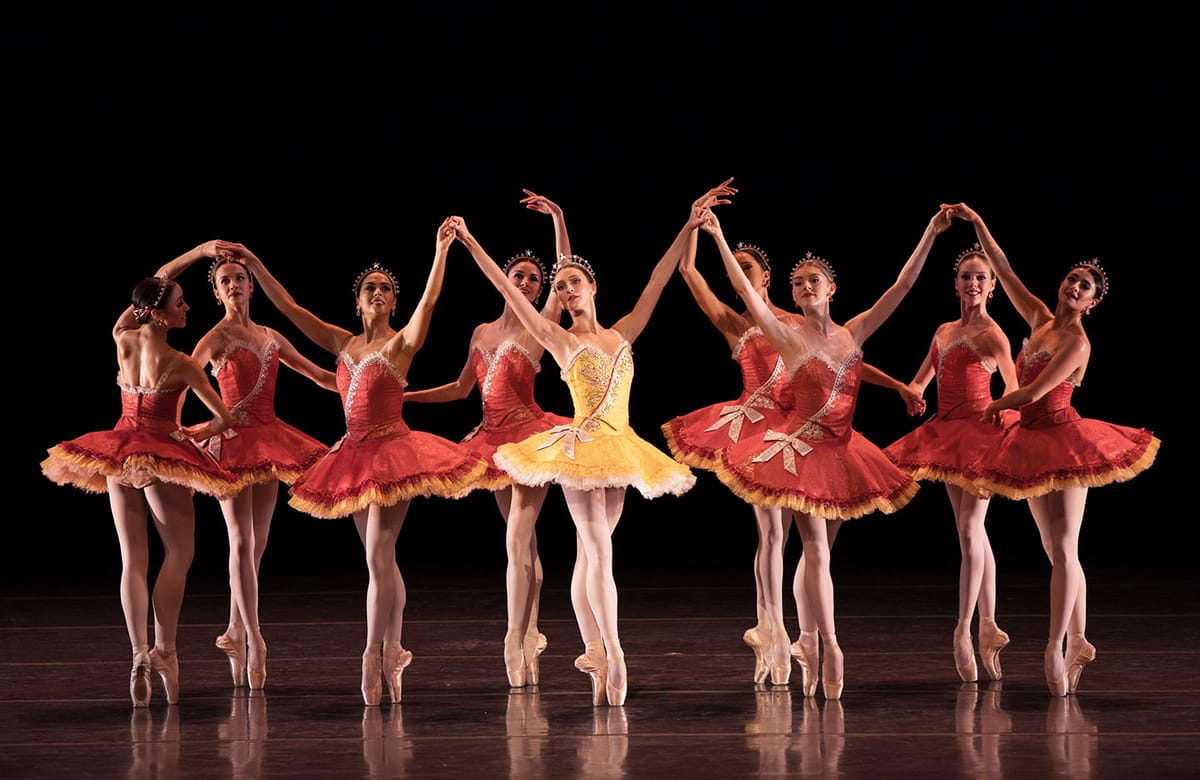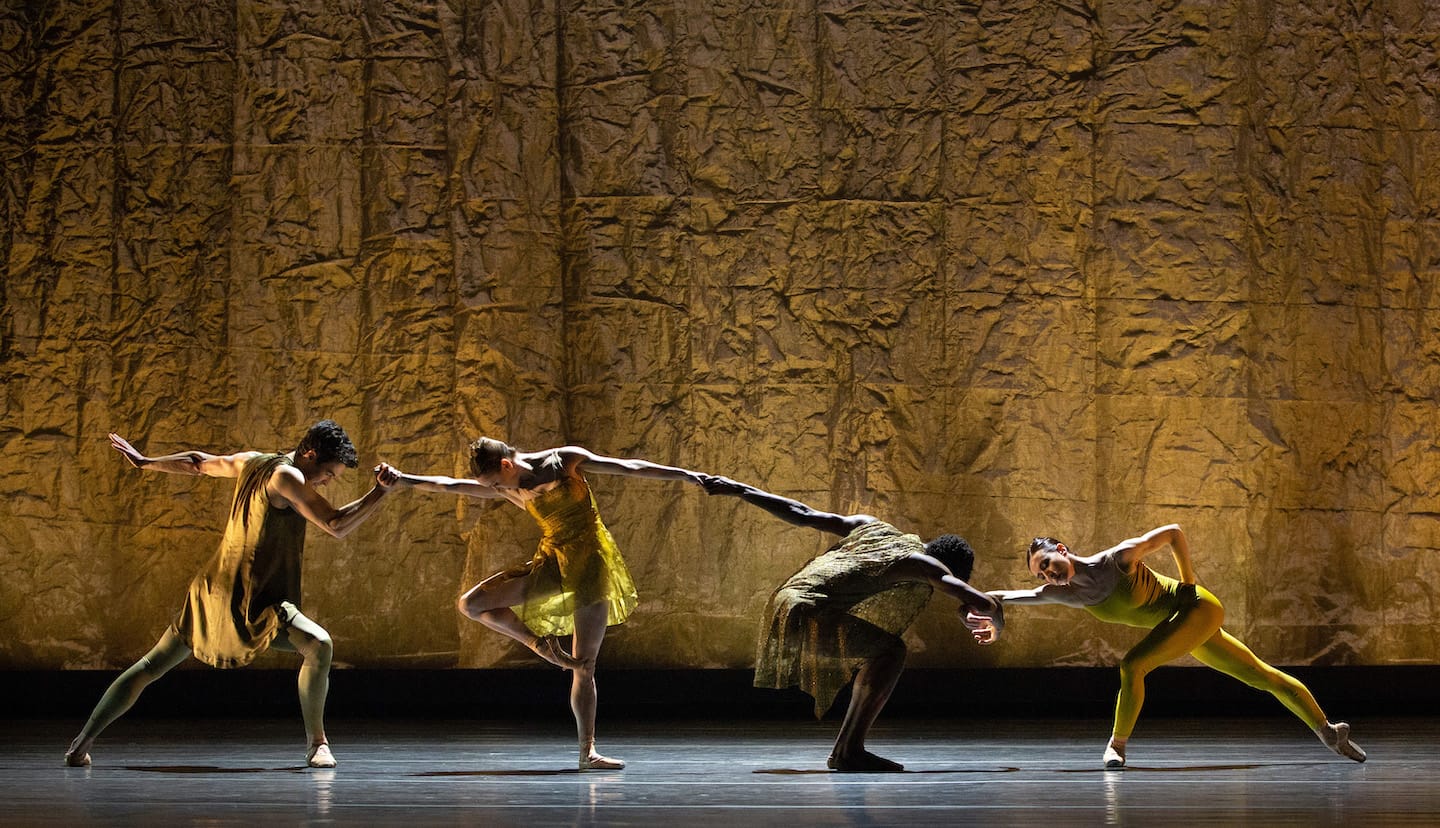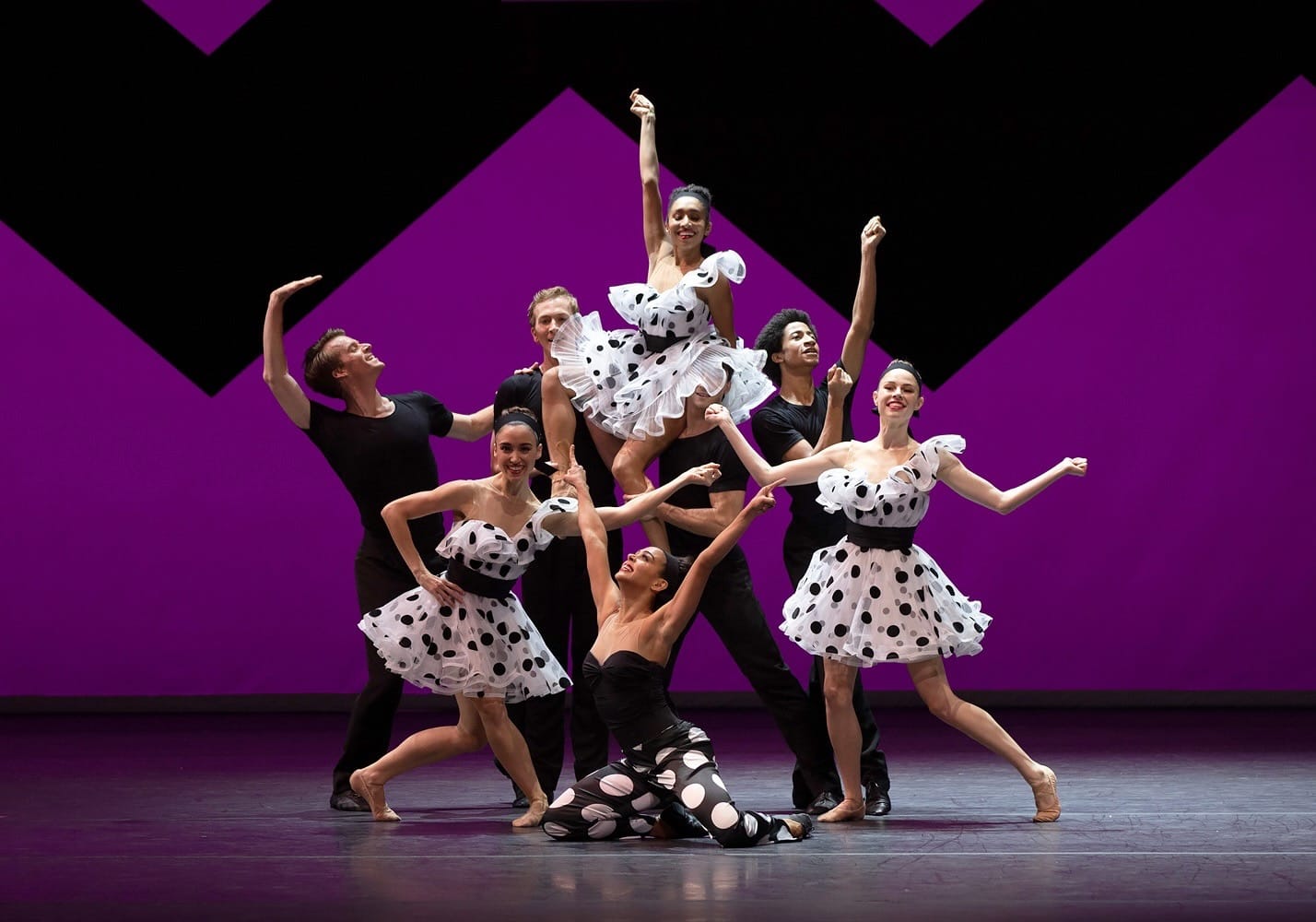Thanks for the Memories

American Ballet Theatre
Metropolitan Opera House
Lincoln Center
New York, New York
June 22, 2022, matinee
This performance of ABT's only triple bill this season, subtitled (a bit hopefully) "American Splendor", was dedicated to Kevin McKenzie, after 30 years as Director of ABT. The evening opened with brief remarks by Gillian Murphy and Herman Cornejo introduced a short film summarizing Mr. McKenzie's career (including adorable pictures of him as a very young, dedicated ballet student) interspersed with interviews of Mr. McKenzie and a few of the dancers he had worked with, some of whom were in the audience. The intermissions were trips down memory lane, spotting dancers who brought back so many happy memories. Then, no more speeches, on with the show, until the confetti exploded in the curtain calls.
The most splendid piece of the evening was Balanchine's "Theme and Variations", one of the Russian-trained choreographer’s most elegant explorations of Petipa's ideas, set to the music by the Russian composer Tchaikovsky. It is grand, formal, hierarchical, and full of old world courtesy. As the anonymous princess, Devon Teuscher danced with a luminous majesty, showing the arc of emotions without extraneous dramatics. In the quiet moment when the corps consoles her, she was not playing Odette, she was the abstract embodiment of Odette's isolation. Teuscher's dancing was clear and pristine, her upper body luscious and her petite allegro exhilarating. She danced as if she had been born wearing a tiara.
Her partner Joo Won Ahn may not have looked like he was born wearing a crown (this was only his second performance), but he was certainly born to wear wight tights. He was polite rather than quietly passionate in the pas de deux but his dancing had a smooth and elegant flow, and he emphasized grace over effort, with plush landings; his side sissones had a wonderful juicy quality, and his double tours, though careful, were landed solidly.
The corps looked impeccably rehearsed. The women were not only dancing the steps, they were reflecting the changing moods, from the gentle melancholy of the adagio to the exhilaration of the final polonaise. The strong male corps, too, gave a rich undertone to their dancing; I was especially moved by the sense of urgency as they gestured toward the women, reflecting that potent music. They weren't just decorative, they made a collective whole of Balanchine's celebration of beauty.

Alonzo King's new work "Single Eye" (2022) had a more opaque message. According to the program the titles comes from a verse in Matthew from the Sermon on the Mount "If thine eye be single, the whole body shall be full of light" (from the James Bible). A more modern translation reads "The lamp of the body is the eye. If therefore your eye is sound, your whole body will be full of light". The recorded music by jazz pianist flowed genially, with a small break for a percussive section, and the golden curtain and shimmering costumes (both by Robert Rosenwasser) were arresting, but lights and eyes, even metaphorical ones, didn't seem to appear.
One eye would not have been enough to watch the large cast who were often onstage doing their own thing for a brief time, then moving on, making it hard to focus; it seemed designed for people with short attention spans. Herman Cornejo walked on nonchalantly, did some sold and impressive balances mixed with slightly despairing gestures with his usual dynamic grace, then disappeared for the rest of the ballet.
The work did give some of ABT's extremely talented dancers a chance to shine. Chloe MIsseldine in a distinctive shark fin tutu showed off her immaculate leggy control in a series of poses, Jacob Clerico and Michael de la Nuez had a fast, crisp duet with flashy arms, and Skylar Brandt was perfectly controlled in a daring attitude-like rotating balance. But striking as many of these images were it was hard to understand what these brief bursts of energy and constant movement, full of stretchy poses and pas de duex where the women seemed to be either pretzels or floor mops had to do with the Sermon on the Mount.

Jessica Lang's "Zig Zag" (2021) was clearly about Tony Bennett, as the frolicking cast bounced through ten of his songs (recorded music again). These songs, of course, were meant to be listened to; they were made late in his career, sung in a gravelly monotone with careful, subtle articulation. Concentrating on the songs often made the dances look trivial, and focusing on the dancing made the songs distracting.
Lang's solution was non-stop movement with lots of jazz hands and perky grins, so at odds with Bennett's style. But while the group dances all had attacks of the cutes, the work, like King's, gave its cast some fine opportunities. Jarod Curley, one of the major discoveries of the season, replaced the injured Aran Bell as one of the three leading men. Curley joined the corps in 2019 and obviously has not danced much since then, but he has a commanding, openhearted presence, and all three men had distinctive personalities. (Eric Tamm was a generous cavalier, and Calvin Royal III an intriguing melancholy.)
Curley gave a fresh-faced enthusiasm to the somewhat overly literal choreography of "I Left My Heart in San Francisco"; we saw wafting arms indicating waves as Bennett intoned "the city on the bay", a shrug to "I don't care", and of course, a group in the back playing at being cable cars. Calvin Royal III, to "Blue Moon" gave his solo a bluesy intonation, playing down the extraneous gestures and used his unique lyricism with a haunting simplicity. But most of the dances had a frantic gaiety and even the naturally sunny Catherine Hurlin, in "It's De-Lovely" with Royal, had a slightly desperate grin. But the audience came to cheer and cheer they did, for the dancers if not for the dance.
Copyright © 2022 by Mary Cargill



